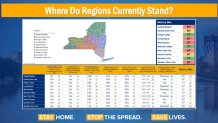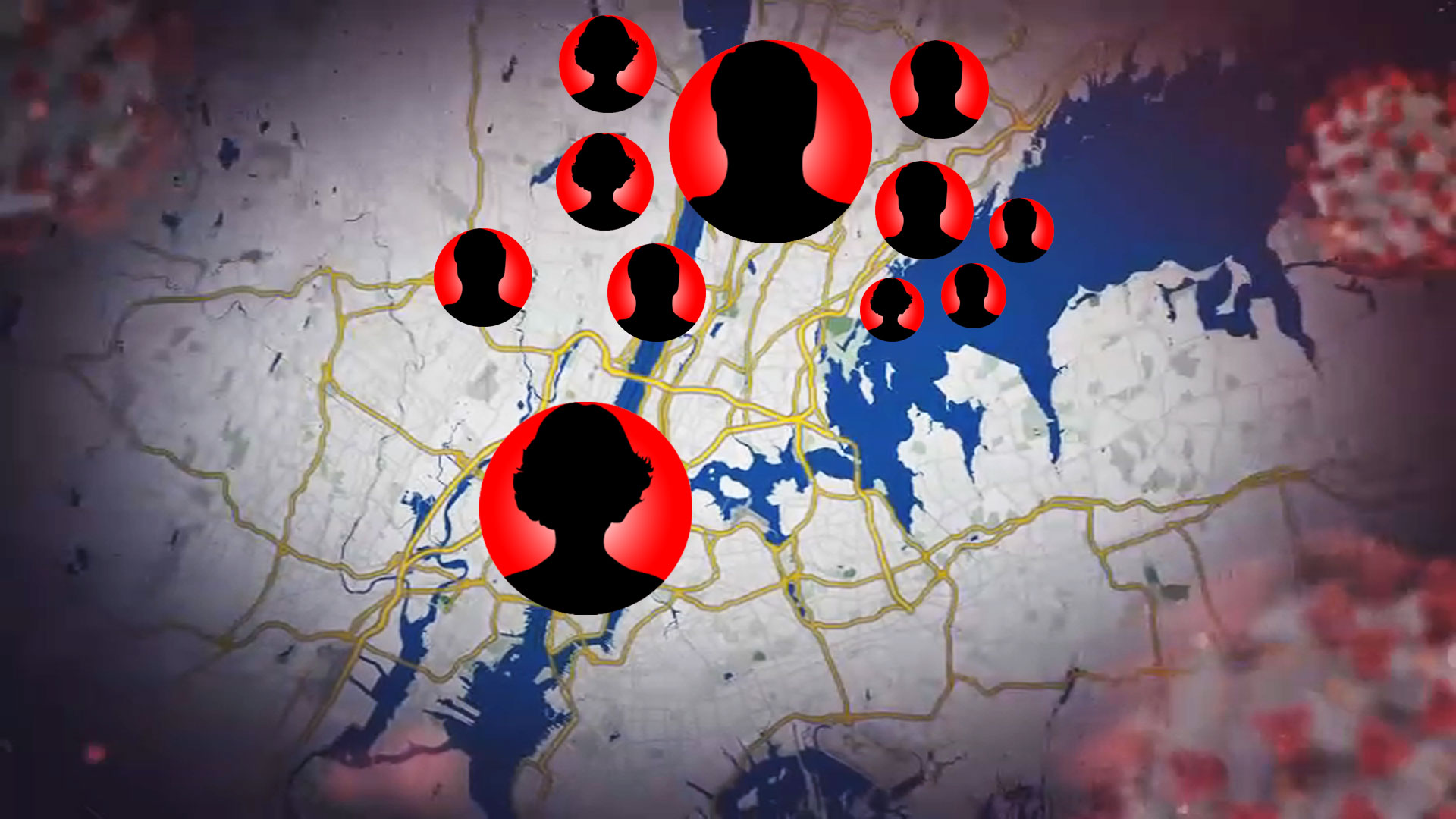What to Know
- Nearly 34,000 people in the tri-state area have died because of COVID-19, though officials admit the real toll is likely higher; other indicators like infection rate and total hospitalizations continue a slow decline
- New York Gov. Andrew Cuomo's "PAUSE" order expires Friday; three regions meet his criteria to begin reopening. Mayor de Blasio doesn't expect non-essential business to reopen in NYC city before June
- New Jersey's shutdown order is also set to expire on May 15; Gov. Phil Murphy says he hopes to have some "hard dates" to share on reopening later this week
Gov. Andrew Cuomo said Monday the statewide shutdown will end when "PAUSE" expires May 15, kicking off a pivotal week in New York's months-long fight against the coronavirus. A number of regions have met his requirements to begin reopening Friday, while others are on the cusp.
Certain low-risk businesses and recreational activities can resume across the state on May 15, Cuomo said. Those include landscaping and gardening, drive-in movies and outdoor activities like tennis that are conducive to social distancing.
"A new chapter starts today," the governor said Monday. "This is the next big step of this historic journey."
Cuomo has broken the state into 10 regions, each ranked across seven key metrics that must be met before they can begin to reopen. As of Monday, three regions -- the Southern Tier, Mohawk Valley and the Finger Lakes, which include cities like Ithaca and Rochester -- had achieved all seven goals. They'll have to finalize logistics before Friday, Cuomo said. Central New York and the North Country are close, checking six boxes.

New York City and Long Island have made progress since Cuomo first specified the regional reopening criteria, but neither is ready yet by his standards, meeting four and five of the seven metrics, respectively, as of Monday.
Those seven metrics are based on two core factors: infection rate and capacity. Regions must prove they have controlled their infection rates and that they have established the hospital, testing, tracing, isolation and compliance capacities to safely sustain their reopenings.
Regions that meet the criteria can, as of May 15, enter the first of four reopening phases, which includes construction and manufacturing business. The second phase involves retail, finance and professional services, while the third addresses food and hospitality. Education and entertainment will be the last sectors to resume, Cuomo has said.
A two-week monitoring period is required between phases. Each region has a Regional Control Room that will oversee developments. Should a region stop meeting one of the seven metrics at any point, its control room will act as a "circuit breaker," effectively pausing the reopening process until the metric is re-met.
Region by Region Status
Source: New York State; Report as of May 11
While some northern and western parts of the state appear ready to go, there are still 21 New York zip codes where the COVID-19 infection and death rates are still far too high, including all five boroughs of New York City.
Mayor Bill de Blasio's three key indicators -- new hospital admissions, current number in ICUs and percent of people testing positive -- all trended down Monday, which is what he wants to see for at least 10 to 14 days before considering easing any restrictions. While all three have been down on a given day before, the city hasn't been able to sustain the trend for consecutive days. Although the decrease in demand has allowed the city to no longer need to use the Billie Jean King Tennis Center in Flushing as a quarantine site, and it will be given back to the USTA in the next few weeks.
On Monday, de Blasio said he doesn't expect non-essential businesses to reopen in the city before June. He also announced alternate side parking would remain suspended through May 17. It will resume May 18 through May 24 for a "clean sweep" citywide, ending what may be the longest such shutdown in city history. It will then be suspended again May 25 to June 7.
Tracking Coronavirus in Tri-State
A Virus With No Timeline: Tri-State Deaths Near 40,000, Cases Top 510,000
America is fighting a virus without a timeline, one that has mutated into a more contagious strain since emerging in China last year and continues to stump the globe's most elite scientists with its mysterious adaptability.
The uncertainty has stalled progress, to some degree. Asymptomatic people can transmit the virus; it's unknown how long antibodies provide protection, if at all. The virus was once thought to spare children. Now, at least three New York children, including a 5-year-old New York City boy, and up to two others may have died of a rare COVID-linked pediatric inflammatory syndrome. Cuomo said the state had identified at least 93 children possibly presenting with the condition, while de Blasio says the city has seen at least 38 cases.
Still, the worst of the crisis appears to be behind us. Cuomo declared Friday "we are finally ahead of this virus," his first such statement since the pandemic hit. The two most stubborn metrics have been new hospitalizations and daily deaths.
On Monday, Cuomo reported 488 new hospitalizations. It was the lowest number since mid-March and a sign the frustrating plateau in the 600s may be shifting. At the same time, he added 161 new deaths, the first time in more than six weeks that the single-day toll fell below 200.
As of Monday, New York state had confirmed 21,640 virus deaths, with 14,693 of those coming from the five boroughs. The official toll does not include New York City's 5,178 probable deaths. If they were included, the five boroughs alone would be on the cusp of 20,000 fatalities (although according to the city's health department numbers, the city has already eclipsed that mark). Outside the confirmed and probable deaths, a new CDC report out Monday finds an additional 5,293 "excess" deaths in NYC between mid-March and May 2 that may be linked to COVID-19.
Nursing homes have been ground zero of the national crisis. Cuomo unveiled a slate of sweeping new regulations for New York's nursing homes on Sunday. Those that fail to meet the new standards by May 15 risk losing their licenses.
New Jersey's long-term care facilities have been hit harder than most, accounting for more than half of the state's deaths, which hit 9,310 Monday. Connecticut has reported 3,008 deaths to date.
More than a half-million infections have been confirmed in the tri-state area; many more people likely have been infected but never were tested. New York state has reported 337,055 virus cases to date, nearly 190,000 of those in New York City. New Jersey and Connecticut respectively had 139,945 and 33,765 cases as of their governors' last reports.
Nationally, the virus has killed nearly 81,000 and infected more than 1.3 million. The economic and psychological costs are catastrophic and mounting. The pandemic is expected to cost New York alone $35 billion; Cuomo says schools, hospitals and local governments face 20 percent budget cuts without a windfall of federal assistance. The state has doled out nearly $6 billion in jobless aid the last two months, as tens of millions of Americans have filed for unemployment.
New Jersey Gov. Phil Murphy, who says his state also faces an insurmountable shortfall without immediate, direct federal aid, said time is of the essence.
"A fiscal disaster is not months away – hard decisions will be on our doorstep in just a few weeks," Murphy said Monday. "Congress needs to act now. This fight is not over, and I will do everything I can to see that it is won."
New Jersey's shutdown order is also set to expire May 15. Murphy said Monday he hoped to discuss some "hard dates" on reopening later this week. He says he plans to broach certain components of it -- testing and contact tracing -- on Tuesday. National guidelines say states should have capacity to test 30 per 1,000 residents monthly and at least 30 contract tracers per 100,000 residents before moving forward with their reopenings.
Experts say the crisis won't really be "over" without a vaccine or effective treatment for the virus. Pharmaceutical companies and the federal government are working to fast-track a vaccine some say could be ready for human trials as early as this summer, though approval will likely take at least a year.
Gilead Sciences' drug Remdesivir has shown promise on the experimental treatment front. The FDA granted emergency use authorization for that drug when treating critically ill patients. Cuomo said Sunday the feds gave New York the green light to start using Remdesivir on 2,900 people at 15 hospitals in the coming weeks, with more doses coming to treat an additional 500 people.



